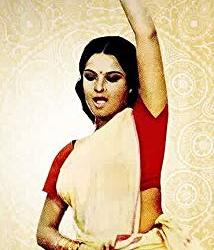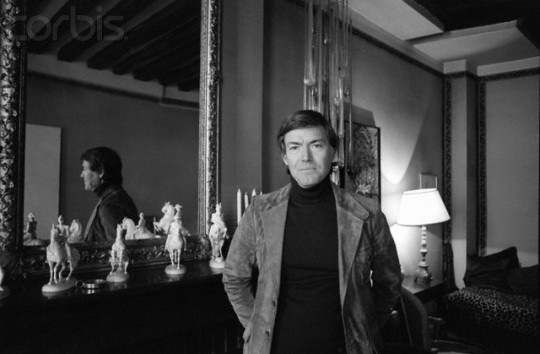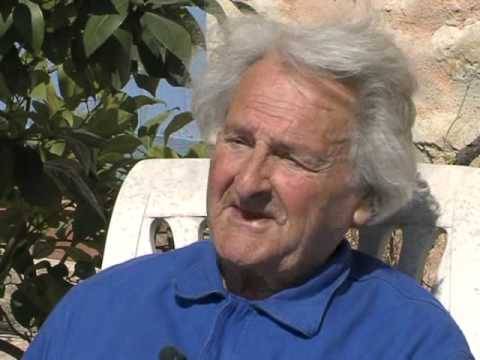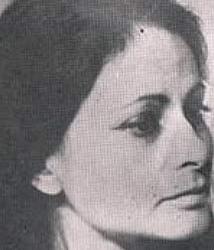#lionel casson
Explore tagged Tumblr posts
Note
Hi! Five favourite history books?
Oh this is a tough one:
- SPQR by Mary Beard was the first book that jumped into my head. It's an easy read and a great intro to Ancient Rome.
- The De Cosmos Engima by Gordon Hawkins - primarily because it's the only book written on Amor De Cosmos in the last several decades and it's very digestible. Spent a lot of time with it when I was working on that video a while back
- Ships and Seamanship in the Ancient World by Lionel Casson. I took an entire class on ancient seamanship and it was really cool: i havent cracked the textbook in years but i remember parts of it very clearly. It's not as digestible but a great source of info if you like the ancient world and boats
- Whose Pharoahs? by Donald Malcolm Reid. Discusses the history of Egyptology in Egypt. Quite academic but still a good read. Content is extremely interesting.
- The Victorian House by Judith Flanders - relied on it a lot when I was working at PEH and even got to attend a virtual lecture of hers once.
14 notes
·
View notes
Text
Books of 2023
"You Look Like a Thing and I Love You" by Janelle Shane - AI is even weirder when you know how it works. Interesting read. Recommended.
"The Spare Man" by Mary Robinette Kowal - Cozy mystery, IN SPACE! Good mystery, fun characters, ACAB. Recommended.
"Grandmaster of Demonic Cultivation, Vol. 4" by Mo Xiang Tong Xiu - Oh they FUCKIN. Recommended.
"Meddling Kids" by Edgar Cantero - Scooby-Doo meets Lovecraft. Scarier than I expected. Recommended.
"Kingdom Hearts: 358/2 Days" vols. 1-5 by Shiro Amano - Break my heart all over again why don't you. Surprisingly humorous. Recommended.
"Every Heart a Doorway" by Seanan McGuire - Boarding school/group therapy for young adults who have just returned from portal fantasies. "Piranesi" vibes. Recommended.
"Down Among the Sticks and Bones" by Seanan McGuire - Prequel "A" to 'Every Heart a Doorway.' Vampires, mad scientists, and the greatest horror: suburbia. Recommended.
"Beneath the Sugar Sky" by Seanan McGuire - Sequel "A" to 'Every Heart a Doorway.' A group of portal-fantasy survivors quest to resurrect a friend. Recommended.
"In an Absent Dream" by Seanan McGuire - Prequel "B" to 'Every Heart a Doorway.' Fae bargains and the consequences of brinksmanship. Recommended.
"Peter Pan" by James Barry - Charmingly written, alarming subtext. At times appallingly racist. An interesting read.
"Come Tumbling Down" by Seanan McGuire - Sequel "B" to 'Every Heart a Doorway.' A portal-fantasy survivor seeks aid to unswap her body. Recommended.
"The Roman Empire" by Don Nardo - Nice overview of the time period, accessible, with good references. At times gratingly Christianity-positive.
"Your Guide to Not Getting Murdered in a Quaint English Village" by Maureen Johnson and Jay Cooper - What it says on the tin. Amusing.
"Across the Green Grass Fields" by Seanan McGuire - Prequel "C" to 'Every Heart a Doorway.' Horse girl goes to horse world. Frankly, missable.
"Everyday Life in Ancient Rome" by Lionel Casson - Fascinating, and has my favorite quality in a historian: petty snark. Recommended.
"Where the Drowned Girls Go" by Seanan McGuire - Sequel "C" to 'Every Heart a Doorway.' Portal Fantasy survivor escapes institutionalization. Recommended.
"T. Rex and the Crater of Doom" by Walter Alvarez - How we figured out what killed the dinosaurs. Recommended.
"Autobiography of a Transgender Scientist" by Ben Barres - Life, science, and activism from a trans neuroscientist. Recommended if you like neuro jargon.
"The Eternal Darkness" by Robert Ballard - A brief history of deep-sea exploration told by someone who's been there. Recommended.
"Lost in the Moment and Found" by Seanan McGuire - Prequel "D" to 'Every Heart a Doorway.' Abused child escapes to a cosmic Lost & Found. Recommended.
"The Writing in the Stone" by Irving Finkel - A mysterious stone drives a Babylonian exorcist to a killing spree. Cool concept, unpleasant execution.
"The Pillars of the Earth" by Ken Follett - Docu-drama about the building of a cathedral. Like if Game of Thrones loved its characters. Recommended.
"The Secret History of Moscow" by Ekaterina Sedia - People are turning into birds and folktale creatures live underground. Not my cup of tea, but Gaiman fans will like it.
"Wild" by Cheryl Strayed - A woman hikes the Pacific Crest Trail alone to grieve her mother's death. An interesting read.
"House of Leaves" by Mark Z. Danielewski - An imaginary film ruins a guy's life. Disturbing. Recommended.
"The Devil in the White City" by Erik Larson - The true story of the 1893 World's Fair and the serial killer who hunted there. Fair bits way more interesting than killer bits. Recommended.
"Piranesi" by Susanna Clark (reread) - The Beauty of the House is immeasurable; its Kindness infinite. Recommended.
17 notes
·
View notes
Text
9 people you'd like to know better
tagged by @nerdkiller [ty <3]
Last Song: Rule #27 - Drunk on Pride [Weapons that are used / Are buried away / Flags that were torn / Get lost in a page / Barely any scars / Left from the good old days] I like listening to Fish In A Birdcage. Thumbs up.
Currently Watching: nothing, I'm bad at watching stuff unless someone hold my hand.
Currently Reading: I juggle books but today I've been continuing The Joy of Living by Yongey Mingyur Rinpoche. It's essentially Tibetan Buddhism meets modern science. I've also been reading Libraries in the Ancient World by Lionel Casson. Libraries 🖤
Current Obsession: Being Alive 🖤 and seeing Trees And Lakes. And, also Honkai Star Rail.
tag ?! @ninjagame @vhscrow @relares @gojoexmachina @fortune-slip @enigmaticgale @rat-prophetess @darkmagiciangirl @roseofnohr
#does the walker choose the path or the path the walker?#sorry for the random tag no pressure if you don't feel like doing silly tag games lol
7 notes
·
View notes
Text
ANCIENT EGYPTIAN HISTORY
Each book will be title followed by author with a summary and thoughts below
Welcome to my (mega) post about all my book recommendations for Ancient Egyptian history! (Mythology will be a separate post)
The very end will say where I got these books, and while I unfortunately cannot find links to add (as I don't know if they will always be available) I can promise to add a small summary and my own thoughts on them
Please note that you can send in your own recommendations, these are for everyone and I want to add as many as I can, you can even comment or message me why I should add/remove a book from the listings.
Please know I own all these books (and more to come with each update,) on a shelf, have read these, and will give my personal opinion (so if they clash with yours, that's completely fine, id love to hear your opinion!)
Let's begin!
When women ruled the world; by Kara Cooney
When women ruled the world (WWRW) is about the political status, very briefly written, about the solo queens of Egypt who made their names into the history books as "women kings" of the times.
Personal opinion: I like this book, it details the potential of Merneith, Neferusobek, Hatshepsut, Nefertiti, Tawosret, and Cleopatra's lives before and after becoming the rulers of Egypt, each in their own dynasty and how different the times were
Why recommend the book? Well, if you want to have a brief (about 40-60 pages each chapter) introduction to these women of Egypt, then this is the book for you, it's somewhat bias in the epilogue, but most of it is written with solid understanding of the dynasty's and their potential lives
Ancient Egypt; by Lionel Casson
This book is about 158-165 pages long (minus the appendix/chronology/acknowledgements/and index), it's very short, and gives you an introduction into the world of ancient Egypt, each section is stock full of information (about 8 small chapters) that go from beginning to end of the ancient world
Personal opinion: my very first book about ancient Egypt! While it wasn't my introduction to the world of the ancient desert (that was a time magazine my brother gave me at age 4, hard to believe I'm an adult now), it did give me insight into how, beyond mummies and the dead were seen, the world was at the time
Why recommend? It's a great start for someone who you think might like the ancient world of Egypt, possibly a child to someone who's just interested but can't find a place to start that covers it all in short succession
Hathor's alchemy, the ancient Egyptian roots of the hermetic art; by Alison m. Roberts
This book is very straightforward, about how they viewed magic and used it, but also how it progressed over the years
Personal opinion: this book to me was, meh, not my favorite, as it wasn't as in depth as I personally wanted it to be about each little thing, but I did like it enough to keep reading
Why recommend? If you're interested in how magic/alchemy was used and progressed through the times, I suggest this book. There are about 260 pages of information (again, minus extra) with pictures, diagrams, and even foot notes (as many of these books have!)
Egyptian magic; by E.A.Wallis Budge
Very short, 233 pages and filled with information, including gliphs, pronunciation, and even use of said things. This book is for those who want more in depth on magic beliefs with unbiased narration.
Personal opinion: HOLY MOLY! Favorite author for this kinda thing, his stuff, perfect, not only is it indepth, but it's written well enough not much has to be explained heavily, there are pictures and gliphs, and words, and it's perfect when you want to look into stuff
Why recommend? If you want something simple, get this book, it's informative and doesn't hold anything relating to biased opinions or views
The ancient Egyptian book of the dead; by E.A.Wallis Budge
This version of the book of the dead, edited by Epiphanius Wilson A.M. is perfect for those who want a brief book on the book of the dead, both explained and translated
Personal opinion; this one is a good start for the book of the dead, a massive piece for Egyptology, it goes about the translations of prayer, the incantation usage, and even other text related, as well as a list of the deities from Egyptian myth
Why recommend? Great starter, there is a second one (i.e the next one on the list, also by E.A. Wallis Budge) that goes more in depth for this, but this is a skimming overview for the information
The Egyptian book of the dead (the papyrus of Ani), by E.A. Wallis Budge
This book goes further into depth, following translation and the original text itself from the papyrus (the language transliterated from the gliphs and symbols to the spoke pronunciation)
Personal opinion; if you are part of the Kemetic religion, I highly recommend this book for personal usage if you wish to write your own scroll of the dead! While I am not personally of the religion, I do think those of it will like this if one wishes to write their own scroll (or have one written for them) before their passing through Duat and eventually to Aaru
Why recommend? If you want more depth to the book of the dead, with original (transliterated) text and translation, this book is best, as it's unchanged and as accurate as possible
Egyptian hieroglyphs for complete beginners, by Bill Manley
This book includes ways to pronounce (with similarities to modern words and sounds) read, and write hieroglyphs, one of many languages used in ancient Egypt by then Egyptians. This book is similar to that of a work book, with understanding of how to explain the language
Personal opinion; I use this book myself, as someone interested in being an egyptologist, this book helps me understand and read the language of hieroglyphics, and being a step by step helps immensely
Why recommend? If you pair this with the next book, these will definitely help you understand the language well enough to be able to translate, and if you too have an interest in the field, you can get a head start!
Ancient Egyptian Phonology, by James Allen
This book explains how many languages were used in ancient Egypt, the various different versions, as well as how to pronounce and use them (however it's not a step by step work book like the previous)
Personal opinion; as I said before, pair this with the previous book and you can help yourself understand the language, it's a personal favorite of mine, and while many sounds are hard for me, practice makes perfect
Why recommend? Like stated before, it's good for those interested in learning the languages used, but it's also for those who want to write, understand, and even learn how they were used/spoken/and written depending where and when the time and place
(all books were bought from either barns and nobles, or books a million, both in store or online shipped, all books are read through, kept, and examined for biased and factual evidence)
5 notes
·
View notes
Text
The book Libraries in the Ancient World by Lionel Casson has a pretty good bit about this. It’s a nice read if you wanna know more about those ancient libraries in general.
Thinking about the Library of Alexandria.
Or at least the *myth* of the Library of Alexandria. You know, the greatest Library in the world, a monument of learning and reading and culture, cataclysmically destroyed in one terrible fire, knowledge lost forever, etc etc. It feels like this great tragedy of history, this terrible loss to humanity.
And it's not...true.
We actually have a lot of sources that show that the library had been in decline for a few centuries before then. Between some scholars getting exiled, a general diaspora of the scholars who remained, lack of funding, and diminishing prestige, it seems that the library's collection and scholarship was already greatly diminished, moved elsewhere.
It's true that Caesars troops did set fire to some ships in the harbor in 48BCE, and that fire did spread through the city. The Library was likely damaged, and some of its materials likely destroyed... but not completely. And it was repaired or rebuilt not long after. (One source even hints that it wasn't the library proper, but some warehouses owned by the library near the docks that burned.)
And the Library continued to exist for at least a few more centuries. Never at the same scale and prestige as it has at its height, but still there as a resource to scholars until at least the 270s CE.
But that's less exciting I guess. Less tragic, maybe. Less dramatic. That instead of it being a terrible accident, an act of the Gods, a perfect symbol at how the folly of war can tumble great monuments- Instead its just...about how underfunded Institutions and lack of support from the government towards academics will rot these great institutions slowly but surely.
And I wonder what it says about us that we find one of those stories more emotionally compelling and evocative than the other.
7K notes
·
View notes
Text
I don't know about pre-Greco Egypt but let me just say the Ptolemies out here making the 18th century French aristocracy look nice
"The Ptolemies reorganized her agriculture to yield the absolute maximum, taxed it so that the peasant was left just enough of his harvest to live on, put the rest in the silos at Alexandria, and exporting it all over the Mediterranean pocketed the proceeds."
The Ancient Mariners by Lionel Casson
#ptolemies#ancient egypt#classical egypt#ptolemy#greek Egypt#greeks#greek culture#greek history#ancient Greece#ptolemy the great#greedy greeks of history#mediterranean#trade routes#egypt#egyptology#call me Evie Carnahan
1 note
·
View note
Text
Roubos de livros e maldições
Você já roubou algum livro em uma biblioteca? Essa é uma prática comum, principalmente em bibliotecas universitárias cujo acervo não comporta a necessidade da enorme quantidade de alunos e funciona com longas listas de esperas. Hoje em dia os bibliotecários tem alguns truques para lidar com isso: chips em livros e sensores nas portas para as mais modernas, a proibição da entrada no acervo com bolsas e mochilas, ou uma simples disposição dos moveis e estantes de modo que o acervo seja visível aos funcionários no balcão.
Mas antigamente, nos primórdios da história das bibliotecas no antigo Oriente, os responsáveis pelo acervo recorriam a outra solução: as maldições. Em Bibliotecas do Mundo Antigo, Lionel Casson conta que várias tabuletas antigas foram encontradas com maldições e agouros para quem roubasse ou até mesmo danificasse as obras. Algumas eram simples avisos:
“Ele que teme Anu e Antu cuidará dela [a tabuleta] e a respeitará”
“Ele que teme Anu, Enlil e Ea vai devolvê-lo para a casa do seu proprietário no dia seguinte”
Já outras maldições eram mais elaboradas e descritivas. Além disso, também foram implementadas outras medidas de segurança como o acesso restrito, proibição de retirar obras do local e em alguns casos, só permitir a consulta na presença de um oficial real.
Segue abaixo a transcrição da minha maldição preferida:
“Ele que quebrar esta tabuleta ou a colocar na água ou a raspar até que você não possa reconhece-la e não possa torna-la compreensível, possa Ashur, Sin, Shamash, Adad e Ishtar, Bel, Nergal, Ishtar de Nínive, Ishtar de Arbela, Ishtar de Bit Kidmurri, os deus do paraíso e terra e os deuses da Assíria, possam todos eles amaldiçoá-lo com uma praga que não pode ser aliviada, terrível e impiedosa, enquanto ele viver, possam eles deixar seu nome, sua semente, serem levados embora da terra, possam eles colocar sua carne na boca de um cão!”.
0 notes
Photo

1 note
·
View note
Photo

Viking picture stone with three men in a sailing ship. Dated to the 700-800 AD. From Bopparve, Alva, Gotland. The stone is today located at the Fornsalen in Visby
…anchors are held by iron chain instead of rope. Their sails are of hide or softened leather or wool instead of canvas, possibly because they have no flax, or don’t know how to use it, but more likely because they figure canvas won’t stand up to the violence of ocean storms and the force of the winds there or drive such heavy vessels efficiently. In a clash with a fleet of these craft the only advantages our boats had were their speed and the fact that they are driven by oars; in every other respect the enemy’s type of ship was better suited and adapted for these waters with their strong winds. (Illustrated History of Ships and Boats, by Lionel Casson, 1964)
180 notes
·
View notes
Photo

Amphoras of various shapes and sizes from wrecks found off the Grand Congloué island near Marseilles Early second century BC. From "Ships and seafaring in ancient times" by Lionel Casson. https://www.instagram.com/equator/p/CZPsALRtPHJ/?utm_medium=tumblr
137 notes
·
View notes
Text
Updated Reading List 3: Ancient History
Historiography, Theory, Methodology, Construction, and Philosophy of History
American History
Ancient History
The Punic Wars 264-146 BC (Essential Histories) by Nigel Bagnall
Libraries in the Ancient World by Lionel Casson
Between Rome and Carthage: Southern Italy during the Second Punic War by Michael P. Fronda
Goddesses, Whores, Wives, and Slaves: Women in Classical Antiquity by Sarah Pomeroy
Women in Ancient Egypt by Gay Robins
Palmyra and Its Empire: Zenobia's Revolt against Rome by Richard Stoneman [NOTE: Zenobia was a baller-ass bitch]
NOTE: I’m an Amazon Affiliate; I will receive a small portion of the proceeds from ANYTHING [hint] you purchase on Amazon via my links. I am an independent scholar, and need $$$ to pay my translators etc for my book on Jewish women’s Holocaust resistance, so anything you can do helps! If you’d rather not give your $$$ to Amazon but still want to help this independent scholar out, my paypal is here.
52 notes
·
View notes
Text
The British Assyriologist Irving Finkel on Herodotus and the Mesopotamian coracle boat

Assyrian quffa, with four oarsmen and a load of large building stone. Note the fishermen astride inflated hide floats to the left and right. (From Lionel Casson, Ships and Seamanship in the Ancient World). Source: http://indigenousboats.blogspot.com/2011/08/ancient-and-occasionally-huge-coracle.html
“Further south, a little later, we get hard information on Babylonian coracles in Greek, from the redoubtable Herodotus, writing his Histories in the second half of the fifth century BC when cuneiform writers were very alive and fertile; his book is one of the world’s ultimate bestsellers. An ongoing dispute persists about whether or not Herodotus actually went to Babylon himself, or about how reliable his statements are, and so forth, but when it came to facts about coracles he knew which way was up:
They have boats plying the river down to Babylon which are completely round and are made of leather. In Armenia, which is upstream from Assyria, they cut branches of willow and make them up into a frame, around the outside of which they stretch watertight skins to act as a hull; they do not broaden the sides of the boat to form a stern or narrow them into a prow, but they make it round, like a shield. Then they line the whole boat with straw and send it off down the river laden with goods. Their cargo is most commonly palm-wood casks filled with wine. The boats are steered by two men, who stand upright and wield a paddle each; one of them pulls the paddle towards his body and the other pushes the paddle away from his body. These boats vary in size from very large downwards; the largest of them can manage cargo weighing five thousand talents. Each boat carries a live donkey – or, in the case of larger boats, several donkeys. At the end of their voyage to Babylon, when they have sold their cargo, they sell off the frame of the boat and all the straw, load up the donkeys with the skins, and drive them back to Armenia. They do this because the current of the river is too strong for boats to sail up it, and that is why they make these boats out of skin rather than wood. Once they have got back to Armenia with their donkeys, they make themselves more boats in the usual way.
Herodotus, Histories Bk 1″
Irving Finkel “The Ark Before Noah, Decoding the Story of the Flood”, available on https://files.secure.website/wscfus/10582237/26182627/the-ark-before-noah-decoding-the-story-of-the-flood-by-finkel-irving-l-team-enki.pdf

Irving Finkel, Source:https://www.theguardian.com/culture/2014/jan/24/babylonian-tablet-noah-ark-constructed-british-museum
Just some remarks on Dr. Finkel’s text:
1/ It is true that it is not sure whether Herodotus visited or not Babylon, but, on the other hand, Herodotus does not claim unambiguously such a visit. If he did visit Babylon, he was there for a brief period of time. Personally I believe that a journey of Herodotus to Babylon is rather improbable, given the historical conditions of the time (Babylon was too deep in the Persian Empire and it does not seem that there was there in the fifth century a Greek community on which Herodotus could rely for hospitality and support). Most probably his sources on Babylonia were indirect (Greeks who had worked for the Persian administration or/and Persians living in Asia Minor).
2/ The “ongoing dispute” in the scholarly community more generally on the value and reliability of Herodotus’ work has taken the last decades a decisive turn in favor of Herodotus, as I have shown in many posts on this blog of mine.
3/ What Dr. Finkel writes on Herodotus and the coracle is another confirmation of the solidity of the thesis that Herodotus is not peddling products of his imagination, but he did a real and difficult investigation to distinguish truth from fiction and to record the reality of the world of his era, that he had a keen interest not only in the “big history” of the empires and their wars, but also in the material and everyday life of the different peoples about whom he writes, and that he provides reliable information about the non-Greek world when he observes personally things or when his sources don’t have their own confusions and agendas.
4 notes
·
View notes
Text
7/26 Book Deals
Happy Friday! The weekend is finally almost here and I hope you’ve all had a lovely week. Looks like some good books on sale to round off the week, so be sure to have a look if you so desire. :) Have a great weekend and happy reading!
Find past book deals here–many of which are still on sale!
Today’s Deals:

A Danger to Herself and Others by Alyssa Sheinmel - https://amzn.to/317jsz1
Player Piano by Kurt Vonnegut - https://amzn.to/2LIezsu
Ancillary Justice by Ann Leckie - https://amzn.to/2SHpcMy
We Were Liars by E. Lockhart - https://amzn.to/32LL12e
Don't Panic: Douglas Adams & The Hitchhiker's Guide to the Galaxy by Neil Gaiman - https://amzn.to/2Yo9mMh
Life in Ancient Rome by Lionel Casson - https://amzn.to/2JTNEHL
The Chilbury Ladies’ Choir by Jennifer Ryan - https://amzn.to/317jFSP
The Little Drummer Girl by John le Carré - https://amzn.to/2JSWUMu
Ship of Gold in the Deep Blue Sea: The History and Discovery of the World's Richest Shipwreck by Gary Kinder - https://amzn.to/2YiCP6l
Ex-Heroes by Peter Clines - https://amzn.to/2YljQbd
Sea Monsters by Chloe Aridjis - https://amzn.to/30VV8zR
NOTE: I am categorizing these book deals posts under the tag #bookdeals, so if you don’t want to see them then just block that tag and you should be good. I am an Amazon affiliate in addition to a Book Depository affiliate and will receive a small (but very much needed!) commission on any purchase made through these links.
#bookdeals#booksale#kurt vonnegut#ann lecki#e lockhart#douglas adams#neil gaiman#peter clines#player piano#ancillary justice#we were liars#john le carre
10 notes
·
View notes
Text
Film/TV People Turning 90 (between 8/1/2018 and 12/31/2018)
Here are the latest members to the nonagenarian club.
George Maharis - actor (9/1)

Allene Roberts - actress (9/1) † 5/9/2019

Serge Bourguignon - director (9/3)

Jerome Hellman - producer (9/4)

Abhumanya Sharma - actor (9/5)
(no photo available)
Brenda Hogan - actress (9/6)

Ivan Vanícek - production designer (9/9)

Earl Holliman - actor (9/11)

Monique Plotin - costume designer (9/13)
(no photo available)
Lubos Sluka - film composer (9/13)

Jochen Stern - actor (9/13)

Fay Chaldecott - child actress (9/14)

Ján Kramár - actor (9/14)

Julie Robinson - actress (9/14)

Henry Silva - actor (9/15)

Giuseppe Pinori - cinematographer (9/15)

Neelam - actress (9/17)

Kåre Santesson - actor (9/19)

Laird Koenig - novelist, screenwriter (9/24)

Harold Becker - director (9/25)

Bill Mosher - editor (9/25)
(no photo available)
István Hildebrand - cinematographer (9/26)

Bob Van der Veken - actor (9/26)

Garry Watson - child actor (9/27)

Stefan Maritan - production designer (9/28)
(no photo available)
Ed Setrakian - actor (10/1)

Rudy Challenger - actor (10/2)

Yôko Yokota - actress (10/3)
(no photo available)
Andrew J. Fenady - producer/screenwriter (10/4)

Raymond Lévesque - actor, film composer (10/7)

Susumu Hani - director (10/10)

Yildiz Kenter - actress (10/11) † 11/17/2019

Lana Gogoberidze - director, screenwriter (10/13)

Giorgio Stegani - director, screenwriter (10/13)

Don Collier - actor (10/17)

Ferenc Baracsi - actor (10/18)

Zev Braun - producer (10/19) † 10/17/2019

Wim Van den Heuvel - actor (10/20)

Pim Lambeau - actress (10/22)

Marthe Mercadier - actress (10/23)

Günter Rohrbach - producer (10/23)

Marion Ross - actress (10/25)

Gianni Minervini - producer (10/26)

Maria Fernanda - actress (10/27)

Gilles Vigneault - film composer, songwriter, actor (10/27)

Yôko Sugi - actress (10/28)

Jack Donner - actor (10/29) † 9/21/2019

Pat Green - producer (10/29)
(no photo available)
Dianne Foster - actress (10/31)

Lew Palter - actor (11/3)

Irena Kosecka - makeup artist (11/4)

Jean Flechet - director (11/5)

Hüseyin Güler - actor (11/6)

John Lasell - actor (11/6)

Ennio Morricone - film composer (11/10) † 7/6/2020

Mircea Muresan - director (11/11) † 4/24/2020

Myvanwy Jenn - actress (11/12)

Ninet Dinar - actress (11/13)

Karl-Ulrich Meves - actor (11/13)

Gianfranco Baldanello - director (11/13)

Clifford A. Pellow - actor (11/13)

Kathleen Hughes - actress (11/14)

Claude Pelletier - sound mixer (11/14)

Clu Gulager - actor (11/16)

Max Turilli - actor (11/18)

Leo Fong - martial artist, actor, screenwriter, producer, director (11/23)

Richard Greer - editor (12/1)
(no photo available)
John Francis Lane - actor (12/1)

Julia Sandoval - actress (12/3)

Dena Dietrich - actress (12/4)

Barbara Krafftówna - actress (12/5)

Nesbitt Blaisdell - actor (12/6)

Shlomo Bar-Shavit - actor (12/7)

Karl-Maria Steffens - actor (12/8)

Michael Snow - director (12/10)

Kevin Scott - actor (12/10)

Ludwig Thiesen - actor (12/10)

Lionel Blair - actor, dancer (12/12)

Terry Carter - actor (12/16)

Phillip Casson - director (12/20)
(no photo available)
Colleen Townsend - actress (12/21)

Bunny Levine - actress (12/22)

Regine Lutz - actress (12/22)

Diana Herbert - actress (12/25)

Dick Miller - actor (12/25) † 1/30/2019

Éric Duvivier - director (12/26)

Lina Rosales - actress (12/27)

Ernest Chambers - producer/screenwriter (12/28)
(no photo available)
Harry “Bud” Hester - animator (12/28) † 2/3/2020

Bernard Cribbins - actor (12/29)

#dannyreviews#nonagenarian#george maharis#earl holliman#henry silva#harold becker#don collier#marthe mercadier#marion ross#jack donner#ennio morricone#kathleen hughes#clu gulager#leo fong#dena dietrich#lionel blair#bernard cribbins#dick miller#michael snow
2 notes
·
View notes
Text
HAEKA, THE MAGICK OF ANCIENT EGYPT, ACQUIRING MAGICKAL POWERS
Heka: The magic ofancient Egypt Acquiring magical powers— Thepractitioners of magic—Practical purposes—The practiceof magic
Search this site
Site map
Feedback
Printout For best results save the whole webpage (pictures included) onto your hard disk, open the page with Word 97 or higher, edit if necessary and print. Printing using the browser's print function is not recommended.
Heka: The magic of ancient Egypt
.....to me belonged the universe before you gods had come into being. You have come afterwards because I am Heka. Coffin texts, spell 261 [2] First Intermediate Period to Middle Kingdom
All religions have a magical aspect [1] , ancient religions like the Egyptian, according to which all of creation was animated to some extent, perhaps more so than many others. Through magic the creation had come into being and was sustained by it. Thus, magic was more ancient, and consequently more powerful, than the gods themselves
I am one with Atum when he still floated alone in Nun, the waters of chaos, before any of his strength had gone into creating the cosmos. I am Atum at his most inexhaustible - the potence and potential of all that is to be. This is my magic protection and it's older and greater than all the gods together! Bookof the Dead, New Kingdom
It was also the extraordinary means for acquiring knowledge about one's surroundings - above all the hidden parts of them - and gaining control over them. Gods, demons and the dead could be implored, cajoled or threatened. Their help could be enlisted to avert evil or achieve one's desires. Magic was accepted by all ancient peoples as a real force. The Hebrew tradition which was strongly opposed to it, did not deny its efficacy, but rather extolled the even greater magical power of its own god:
8 And the Lord spake unto Moses and unto Aaron saying, 9 When Pharaoh shall speak unto you, saying, Shew a miracle for you: then thou shalt say unto Aaron, Take thy rod, and cast it before Pharaoh, and it shall become a serpent. 10 And Moses and Aaron went in unto Pharaoh, and they did so as the Lord had commanded: And Aaron cast down his rod before Pharaoh, and before his servants, and it became a serpent. 11 The Pharaoh also called the wise men and the sorcerers: now the magicians of Egypt, they also did in like manner with their enchantments. 12 For they cast down every man his rod, and they became serpents; but Aaron's rod swallowed up their rods. Exodus 7 [29] about 6th or 5th centuryBCE
Egyptian magical thinking continued to influence Europe. Thoth, god of wisdom and learning, was identified with the Greek Hermes Trismegistus. He was thought by the Hermetists to have originated the Hermetica, 42 books of magic [12] .
Isis lactans 26th dynasty
The worship of Isis, of whom the Metternich Stela (4th century BCE) says "I am Isis the goddess, the possessor of magic, who performs magic, effective of speech, excellent of words," became widespread throughout the Roman empire. She was the original mother of god, Isis lactans feeding her son Horus, which Christianity adopted as the Madonna. Her role as protectress is reflected in the Marian cult.
Acquiring magical powers
While its efficiency in the hands of mortal practitioners was perhaps often less than had been hoped for, magic attracted people because it was practical and made sense. Everything had a reason, often hidden to the ordinary person, but revealed to the knowledgeable.
Magical spell written in Coptic Picture source: Duke Papyrus Archive
Magic explained the relationships between causes and effects using ideas people could relate to. Analogies and symbolisms were widely used, the sympathetic principle of like affecting like was invoked, associations, be they pure coincidence, were imbued with meaning, and historic occurrences became predictors for the future. There were even prescribed ways for explaining why expected results had not materialized.
It appears that, originally, the Egyptians, like some other peoples who practiced ritual cannibalism, thought that spiritual powers resided in the body and could be acquired by ingestion. There is no evidence, though, that such a view was more than speculative and ever acted upon.
The king orders sacrifices, he alone controls them, the king eats humans, feeds on gods, he has them presented on an altar to himself, he has agents to do his will. He fires off the orders! ............ The king eats their magic, he gulps down their souls, the adults he has for breakfast, the young are lunch, the babies he has for supper, the old ones are too tough to eat, he just burns them on the altar as an offering to himself. Pyramid Texts 273-4, Old Kingdom translated byJacob Rabinowitz [5]
Magic was tightly bound up with writing, although there must have been an extensive purely oral tradition which was never recorded and is therefore lost to us. Most practitioners gained magical knowledge by studying ancient scriptures [20] . Chief among them were the lector-priests, the only clerics who were fully professional since the beginning of recorded history. They were the keepers of the sacred books.
The practitioners of magic
Magical knowledge and power emanated from the gods and was bestowed upon their servants, the kings ...
Utterance of all the gods, [to] Amon-Re: "This thy daughter [Hatshepsut], who liveth, we are satisfied with her in life and peace. She is now thy daughter of thy form, whom thou hast begotten, prepared. Thou hast given to her thy soul, thy [...], thy [bounty], the magic powers of the diadem...... The coronation of Hatshepsut 18th dynasty Breasted Ancient Records ofEgypt Part 2, § 220 Come glorious one; I have placed (thee) before me; that thou mayest see thy administration in the palace, and the excellent deeds of thy ka's that thou mayest assume thy royal dignity, glorious in thy magic, mighty in thy strength. Thutmose I,summoning his daughter to be crowned 18th dynasty Breasted Ancient Records ofEgypt Part 2, § 235
... and their substitutes in the service of the gods, the priesthood. But there were also less exalted magicians who did not deal with life and death, but with more mundane issues like good luck charms, pest control or love potions.
Aydressed as High Priest performing the Opening ofthe Mouth ceremony Tomb KV 62, 18th dynasty Picture source: Lionel Casson AncientEgypt
Sometimes spells fell into the wrong hands. Anybody capable of reading could use them [17] , and, at times, some did so with evil intentions.
Now, when Penhuibin, formerly overseer of herds, said to him: "Give to me a roll for enduing me with strength and might," he gave to him a magic roll of Usermare-Meriamon (Ramses III), L.P.H., the Great God, his lord, L.P.H., and he began to employ the magic powers of a god upon people. Recordsof the Harem Conspiracy againstRamses III20th dynasty
To the ordinary mortal magic could be dangerous, and coming into physical contact with the divine deadly. The accidental touching of the royal sceptre even by a sem priest had to be counteracted by the king's spell, and the incident was serious enough to be recorded:
The king of Upper and Lower Egypt Neferikare appeared as King of Lower Egypt on the day of the seizing of the anterior rope of the God's barque. There was the sem priest Rewer before his majesty in his office of sem priest, responsible for the clothing. The ames sceptre which was in the hand of his majesty, touched the foot of the sem priest Rewer. His majesty said to him: "May you be well!" - thus spoke his majesty. Behold, his majesty said: "It is desirable to my majesty that he may be well, without a blow for him." Behold, he is more esteemed by his majesty than any other man. His majesty ordered to have (it) put in writing on his tomb which is in the necropolis. His majesty caused a record to be made about it, written in the presence of the king himself in the district of the palace, in order to write down according to what had been said in his tomb which is in the necropolis. From thetomb ofRewer (5th dynasty) [24]
Practical purposes
Magic had important pragmatic aspects, which were exploited to achieve the aims of humans, dead or alive, spirits, and gods:
Creation of the world by Ptah, the self-fertilization of Amen or Khnum's shaping of man from clay were all deeds unachievable by ordinary means.
He (Ptah) gave birth to the gods, He made the towns, He established the nomes, He placed the gods in their shrines, He settled their offerings, He established their shrines, He made their bodies according to their wishes. From theShabaka Stone, 25th dynasty
The giving of birth was not just miraculous, but also dangerous, and the newly born was especially vulnerable.
Birth brick Picture source: University of Pennsylvania Museum website [2]
Birth bricks [2] on which the woman in labour crouched, were decorated with depictions of Hathor and other goddesses and were believed to bestow protection on the mother and above all her baby, and charms were used to guard children from evil demons [18] . Boys appear to have been favoured by their parents and given better protection, e.g. only boy's names are mentioned on apotropaic wands carved of ivory and decorated with pictures of protective deities. [25]
The dead and their resting place needed protecting too and, as history has proven, ancient curses turned out to be most ineffective
The elder of the house of Meni, he says: A Crocodile against him in the water. A snake against him on land. He will do something against that same one. At no time did I do anything against him. It is God who will judge. Inscription in the tomb of Meni, 6th Dynasty, at Giza
Amulets were worn by the living and given to the dead to empower and ward off evil [21] . Some mummies had dozens of scarabs packed into their bandages.
He (the sun god) created for them magic as a weapon, to fend off the blows of the happenings. The teachingsof Merikare,Middle Kingdom After Jan Assmann Ägypten - Theologie und Frömmigkeit einer frühen Hochkultur, p.72
As diseases were thought to be caused by spirits, healing was a magical science: the giving of medicines and the nursing care were accompanied by spells designed to expel these pathogenic agents.
Get thee back, thou enemy, thou dead man or woman ... Thou dost not enter into his phallus, so that it grows limp. Thou dost not cast seed into his anus (?) ... Gardiner,Theban Ostraca, C 1,p.13-15
According to the Bentresh Stela, describing an apparently fictitious medical case in the strange far-off country of Bekhten, when the daughter of the chief fell ill, the statue of Khonsu-the-Plan-Maker, Great God, Smiter of evil Spirits was sent from Egypt:
Then this god went to the place where Bentresh was. Then he wrought the protection of the daughter of the chief of Bekhten. She became well immediately. Then said the spirit which was in her before Khonsu-the-Plan-Maker-in-Thebes: "Thou comest in peace, thou great god, smiting the barbarians......... I am thy servant. I will go to the place whence I came, to satisfy thy heart concerning that, on account of which thou comest .........." Bentresh Stela possibly27th dynasty or later James Henry Breasted AncientRecords of Egypt Part Three, §443 f.
Physicians, priests and magicians - no clear demarcation line appears to have separated these, to our eyes very different, callings -seemingly worked according to quite strict guidelines as to how the body was to be examined, how the results were to be interpreted and which treatments were to be performed and which were not.
There are vessels in every limb of the body. When some physician, some sakhmet priest, some magician lays his finger on the head, on the back of the head, on the hands, on the place of the heart, on both arms and both legs, then he will feel the heart, as there are vessels in every limb of the body and it (i.e. the heart) 'speaks' at the beginning of the vessels of all body parts. EbersPapyrus, col. 99,Middle Kingdom
The more radical cures, like Isis restoring Osiris to life or Khufu's magician Djedi re-attaching cut-off heads belonged strictly to the realms of mythology or fancy.
The acquisition of knowledge concerning spiritual beings or the future enhanced a person's control over his destiny. One path to such knowledge was the interpretation of dreams, which was also used for justifying one's actions or legitimizing one's power:
In year 1, of his coronation as king ...... his majesty saw a dream by night: two serpents, one upon his right, the other upon his left. Then his majesty awoke, and he found them not. His majesty said: "Wherefore [has] this [come] to me?" Then they answered him, saying: "Thine is the Southland; take for thyself (also) the Northland. The two goddesses shine upon thy brow, the land is given to thee, in its length and its breadth. [No] other divides it with thee." Stela ofTanutamen 25th dynasty JamesHenryBreasted Ancient Recordsof Egypt Part Four § 922
The power attained through magic could serve many purposes, good or evil. It could be used to manipulate people's behaviour or feelings as the many love-spells prove [23] . According to the writings of Pseudo-Callisthenes Nectanebo II used magic to defend his country from outside enemies.
Magical stela, middle of 4th century BCE => Picture source: Metropolitan Museum [7]
Whenever he was threatened with invasion by sea or by land he succeeded in destroying the power of his enemies, and in driving them from his coasts or frontiers; and this he did by the following means. If the enemy came against him by sea, instead of sending out his sailors to fight them, he retired into a certain chamber, and having brought forth a bowl which he kept for the purpose, he filled it with water, and then, having made wax figures of the ships and men of the enemy, and also of his own men and ships, he set them upon the water in the bowl, his men on one side, and those of the enemy on the other. He then came out, and having put on the cloak of an Egyptian prophet and taken an ebony rod in his hand, he returned into the chamber, and uttering words of power he invoked the gods who help men to work magic, and the winds, and the subterranean demons, which straightway came to his aid. By their means the figures of the men in wax sprang into life and began to fight, and the ships of wax began to move about likewise; but the figures which represented his own men vanquished those which represented the enemy, and as the figures of the ships and men of the hostile fleet sank through the water to the bottom of the bowl, even so did the real ships and men sink through the waters to the bottom of the sea. In this way he succeeded in maintaining his power, and he continued to occupy his kingdom in peace for a considerable period. E. A. WallisBudgeEgyptian Magic [4]
Through death a person lost his power over his body. In order for him to pass safely through the underworld his mummy's sensual functions had to be restored. This was done in the ceremony of the opening of the mouth. Statues were similarly empowered.
There was no tradition of magic that was evil in itself, what we would refer to as Black Magic, but magic could be abused and was in these instances treated as criminal behaviour, though possibly especially abhorrent. Both in the Rollin and the Lee Papyrus the deeds of magicians who had supported a conspiracy against Ramses III were called "great crimes of death", "the abominations of the land" or the like, probably because the victim had been the king himself.
The practice of magic
The [magician Horus-son-of] Paneshe returned [quickly]; he brought his books and his amulets to [where Pharaoh] was. He recited a spell to him and bound an amulet on him, to prevent the sorceries of the Nubians from gaining power over him. He [went] out from Pharaoh's presence, took his offerings and libations, went on board a boat, and hastened to Khmun. He went to the temple of Khmun, [made his] offerings and his libations before Thoth, the eight-times great, the lord of Khmun, the great god. He made a prayer before him saying: "Turn your face to me, my lord Thoth! Let not the Nubians take the shame of Egypt to the land of Nubia! It is you who [created] magic [spells]. It is you who suspended the sky, who founded the earth and the netherworld, who placed the gods with ....... Let me know how to save Pharaoh [from the sorceries of the] Nubians!" From the story Prince Khamwasand Si-Osire [3]
Preparations
In order for magic spells to succeed elaborate preparations had to be made at times: It was generally wise not to choose an unlucky day, the time (dusk and dawn were especially auspicious) and place (often a dark chamber, a dark recess, a clean dark cell or a secret dark place) had to be appropriate, and, as is only proper for such spiritual endeavours, the ingredients, the medium and the magician had to be suitable, which generally meant that they had to be ritually pure: If it be that you do not apply (?) purity to it, it does not succeed; its chief matter is purity [9] . Thus in one divination spell a boy who has not been with a woman as medium was required, in another one could address the moon after being pure for three days. Implements and ingredients too needed to be acceptable, either new or carefully cleansed:
You go to a dark chamber with its [face] open to the South or East in a clean place: you sprinkle it with clean sand brought from the great river; you take a clean bronze cup or a new vessel of pottery and put a lok-measure of water that has settled (?) or of pure water into the [cup] and a lok-measure of real oil pure .... TheDemotic Magical Papyrus of London and Leiden Roman Period
One's own semen, a new brick or even milk of a black cow were relatively easy to come by, a two-tailed lizard on the other hand needed some searching, and Alexandrian weasels or hawks were becoming quite rare in the late first millennium BCE: in a temple which specialized in mummifying hawks there was a major scandal when it was discovered that the mummies contained anything but hawks.
Spells
The word, spoken or, perhaps even more potent, written down and read out aloud, was the means to influence other beings and bend them to one's will. Speech was often accompanied by actions, precisely prescribed rituals for which there were no obvious reasons and which were frequently repeated:
...... you take a vine-shoot before it has ripened grapes, you take it with your left hand, you put it into your right hand - when it has grown seven digits (in length) you carry it [into your] house, and you take the [fish] out of the oil, you tie it by its tail with a strip (?) of flax,you hang it up to . ..of(?) the vine-wood...... TheDemotic Magical Papyrus of London and Leiden
Execration rituals included piercing of a figurine with needles or knives, spitting, or burning. Some pharaohs asserted their dominance over their enemies by symbolically trampling on them: they had their foes' pictures painted on the soles of their sandals.
Talisman facilitating the process ofchildbirth Ptolemaic Period Source: © GeorgesPoncet / Muséedu Louvre [16]
Many spells required the use of special foodstuffs [18] , magical implements, figurines, talismans and the like. During the Middle Kingdom magic knives [15] , sometimes also called apotropaic [14] wands, were made of carved hippo tusks and often decorated with animal depictions. One of them carried the words Cut off the head of the enemy when he enters the chamber of the children and the spells were hoped to afford protection from snakes, scorpions [28] and other dangers. Animal figurines were among the equipment of tombs. Very popular were hippo talismans. Hippos are fiercely protective of their young and dangerous to man, the dead were therefore frequently endowed with figurines which had a leg purposely broken off to prevent them from hurting the tomb owners. Vessels, lamps, knives and other utensils were used. Blood (of smun-geese, hoopoes, nightjars, worms, puppies, humans etc), semen, oil and water were mixed with other animal or plant matter (shavings from the head of a dead man, hawk, ibis or crocodile eggs, gall of a gazelle, ankh-amu plant, [senepe plant], 'Great-of-Amen' plant, qes-ankh stone, genuine lapis-lazuli, 'footprint-of-Isis' plant). Myrrh and frankincense were burned as was the Anubis-plant. Turpentine and styrax (storax), a fragrant gum, were added to the incense [9] .
In execration rituals figurines were made of wax which could then easily be destroyed by force or by fire
Magic figurine Ancient Egypt Magazine, Issue Nine - November/December 2001 [10]
This spell is to be recited over (an image of) Apophis drawn on a new sheet of papyrus in green ink, and (over a figure of) Apophis in red wax. See, his name is inscribed on it in green ink ... I have overthrown all the enemies of Pharaoh from all their seats in every place where they are. See, their names written on their breasts, having been made of wax, and also bound with bonds of black rope. Spit upon them! To be trampled with the left foot, to be fallen with the spear (and) knife; to be placed on the fire in the melting-furnace of the copper-smiths ... It is a burning in a fire of bryony. Its ashes are placed in a pot of urine, which is pressed firmly into a unique fire. Nine Measuresof Magic; Part3: 'Overthrowing Apophis': Egyptian ritual in practice Ancient Egypt Magazine Issue Nine- November/December 2001 [10]
Things were often chosen for their colour. Black, mentioned twenty times in the Demotic Magical Papyrus, and white, twelve instances, dominated: milk from a black cow, blood of a black dog, a new white lamp etc. Great importance was attached to the names of the invoked gods or spirits, names which were hidden from the uninitiated. The very knowledge of their true names as opposed to those more widely known (Sarpot Mui-Sro is my name, Light-scarab-noble (?) is my true name) [9] , gave one considerable power over them. These appellations had to be pronounced properly, in the right sequence and in their entirety:
'........ Io, Tabao, Soukhamamon, Akhakhanbou, Sanauani, Ethie, Komto, Kethos, Basaethori, Thmila, Akhkhou, give me answer as to everything about which I ask here to-day.' Seven times. TheDemotic Magical Papyrus of London and Leiden
This invocation was to be repeated seven times. Often a simple two-fold repetition seemed to suffice, but three-, four- and even nine-fold reiterations were also frequent. In Ani's Book of the Dead, the deceased reaffirms his innocence four times:
I am pure. I am pure. I am pure. I am pure. BudgeThe Book ofthe Dead,Chapter 125 [8]
These magical numbers were also important in other contexts. A certain love spell required nine apple-pips together with your urine, another a Kesh...-fish of nine digits and black. For a vessel divination three new bricks were needed; and one was supposed to pour an unsavory concoction of semen, blood and other ingredients into a cup of wine and add three uteh to it of the first-fruits of the vintage. Other numbers like five, six or eight were rarely used [9] .
When the life of a patient was in danger because of a snake bite, a sekhmet priest might threaten to cause the solar barque to run aground on a sandbank, describing the dire consequences that would ensue to the very fabric of the world:
The sun barque is at rest and does not proceed, The sun is still in the same spot as yesterday. The nourishment is without ship, the temple is barred, There the disease will turn back the disturbance To yesterday's location. The daemon of darkness is about, the times are not separated. The shadow's shapes cannot be observed anymore. The springs are blocked, the plants wither, Life is taken from the living Until Horus recovers for his mother Isis, And until the patient's health is restored as well. After Jan Assmann Ägypten - Theologie und Frömmigkeit einer frühen Hochkultur, p.85
The need of the deceased for magic was perhaps even greater than that of the living. After dying they were completely helpless until their faculties had been restored by the ritual of the Opening of the Mouth and they had been equipped with the knowledge needed to address gods and daemons by their hidden, true names and the spells necessary to ward off the dangers they would encounter.
Homage to thee, O great God, Lord of Maati! I have come unto thee, O my Lord, and I have brought myself hither that I may behold thy beauties. I know thee, I know thy name, I know the names of the Forty-two Gods who live with thee in this Hall of Maati, who live by keeping ward over sinners, and who feed upon their blood on the day when the consciences of men are reckoned up in the presence of the god Un-Nefer. In truth thy name is "Rehti-Merti-Nebti-Maati." ThePapyrus of Ani, translated by E.A.W. Budge
But not all was gloom in the Netherworld. The duties a person had to perform by himself in this world, could be attended to by a stand-in, an ushabti (also called shawabti at times) in the next, if you knew how to make him do it [19] :
Spell for causing a shawabti to work for its owner in the underworld. To be recited over the shawabti, which will be made either of tamarisk or thorn wood. This shall be carved to resemble its owner as he appeared in life, and placed in the tomb. Look upon this man, ye gods, transfigured souls and spirits of the dead, for he has acquired force, seized his moment, taken on royal authority, he's a pharaoh, ruling mankind, controlling them like cattle. They were created to serve him. The gods themselves ordained it. Now, shawabti: If, in the world of the dead, X is ordered to perform the yearly stint of public work all Egyptians owe their pharaoh, be it to move bricks, level off a plot of ground, re-survey land when the Nile-flood recedes or till new-planted fields, you will say; "Here I am!" to any functionary who comes looking for X while he is trying to enjoy his meal of funerary offerings. Take up your hoe, shawabti, your pick, your demarcation pegs, your basket, just as any slave would for his master. O shawabti made for X, if X is called for his obligations to the state you will pipe up: "Here I am!" whether X is summoned to oversee workers in the new-planted fields, tend to irrigation, move sand from East to West or vice versa "Here I am!" you will say and take his place. Coffin Text 472, translated byJacob Rabinowitz [6]
Addressing supernatural powers
Prayers and offerings
In dealing with the gods care was required. They were powerful and, consequently, highly respected: Mut carried the epithet Great in Magic, the vulture-headed Heknet [26] , the Praiser, was Mistress of Spirits, [27] the hippo goddess Taweret was called Great of Sorcery and Sekhmet was the Powerful One. Their nature was often dual: Taweret was a protectress against Typhonic powers, carrying an ankh or a burning torch, but she had the form of an extremely dangerous animal [13] ; Sekhmet, a ferocious lion goddess, brought death and destruction when she accompanied the pharaoh on his campaigns of war, but was the main support of the healers in their fight against disease. It was best to treat them with reverence. Many people today may see practices such as prayers and offerings to gods as distinct from magic, it was not to the Egyptians. Both the living and the dead went to great lengths to receive the blessing of the gods. Hymns of praise were composed and recited, written down on papyrus and put in the tombs. Offerings of food, real or carved on walls, were supposed to satiate the god's hunger and thirst. Just as the statue of the god Amen for instance was the god himself, a magician, by identifying himself with a god, was transformed into him
'I will say: "Come to me Montu, lord of the day! Come, that you may put N born of N into my hand like an insect in the mouth of a bird". I am Montu whom the gods adore. I will sever your bones and eat your flesh.' Ostracon found at Deir el Medine 19th dynasty Ancient EgyptMagazine: Nine measures of magic [11]
Invoking and dismissing
Lesser magical beings like demons, spirits or the deceased did not quite warrant the same amount of respect. But they were the main agents of magic and could be invoked by simple means:
Prescription to make them speak: you put a frog's head on the brazier, then they speak.
or
Prescription for bringing the gods in by force: you put the bile of a crocodile with pounded frankincense on the brazier. If you wish to make them come in quickly again, you put stalks (?) of anise (?) on the brazier together with the egg-shell as above, then the charm works at once. TheDemotic Magical Papyrus of London and Leiden
If they did not obey they (even lamps) could be threatened:
I will not give thee oil, I will not give thee fat. O lamp; verily I will give thee the body of the female cow and put blood of the male bull into (?) thee and put thy band to the testicles (?) of the enemy of Horus. TheDemotic Magical Papyrus of London and Leiden
Once one had received their services it was best to send them away as they could be unpredictable
His dismissal formula: 'Farewell (bis) Anubis, the good ox-herd, Anubis (bis), the son of a (?) jackal (and ?) a dog . . . another volume saith: the child of . . . Isis (?) (and ) a dog, Nabrishoth, the Cherub (?) of Amenti, king of those of.....' Say seven times.
or
The charm which you pronounce when you dismiss them to their place: 'Good dispatch, joyful dispatch!' TheDemotic Magical Papyrus of London and Leiden
Picture sources: [ ] Coptic spell papyrus: Duke Papyrus Archive [ ] Ay dressed as High Priest: Casson Ancient Egypt [ ] Birth brick: University of Pennsylvania Museum website [2] [ ] Magical stela: Metropolitan Museum, 360-343 B.C.E.; Dynasty 30, reign of Nectanebo II; Greywacke; H. 32 7/8 in. (83.5 cm), Fletcher Fund, 1950 [7] [ ] Talisman facilitating the process of childbirth: © Georges Poncet / Musée du Louvre [16] [ ] Magic figurine: Ancient Egypt Magazine, Issue Nine - November/December 2001 [10] [ ] Late Period faience udjat: University College, London [ ] Love charm: Étienne Drioton, Un charme d'amour égyptien d'époque gréco-romaine, BIFAO 41 (1942), p.75
Footnotes: [1] Theologians belonging to the three monotheistic religions tend to deny this, drawing a clear line between their 'pure' doctrines devoid of superstition and paganism. But there is no real difference in attitude between Christians, Jews and Muslims and followers of other traditions. They all use rituals which only to a believer are not classified as magical. Thus, Jews kiss the mezuzah, a small case attached to the doorpost containing religious texts, Christians cross themselves, and Muslims circle around a stone when performing the hadj. People will claim that it is the thought behind the ritual which counts - which of course is exactly what magic is all about. [14] apotropaic: averting evil, from Greek apotrepein, turn away [17] The magic itself was the essence, not the magician. In the Pyramid Texts king Pepi threatened the gods with the withholding of all offerings if they did not assist him in rising to the heavens
It is not this king Pepi who says this against you, it is the charm which says this against you, ye gods. J.H. Breasted Development of Religion and Thought in Ancient Egypt, p. 111
[19] If the eagerness of the ushabtis to do their duty was indicative of the work ethics of Egyptian workers we may begin to sympathize with their employers: the tombs ended up by being filled with statuettes, as each was expected to be active for just one day in the year, and there were overseer ushabtis carrying flails. [20] At least in tales hard study could be avoided, possibly at the price of upsetting one's stomach: Prince Naneferptah
... called for a new piece of papyrus, and wrote on it all that was in the book before him. He dipped it in beer, and washed it off in the liquid; for he knew that if it were washed off, and he drank it, he would know all that there was in the writing. Princess Ahura: The Magic Book
[21] In his 1914 monograph on amulets Petrie distinguished five classes of amulets [22] : 1. Similars, or Homopoeic, which are for influencing similar parts, or functions, or occurrences, for the wearer 2. Powers or Dynatic, for conferring powers and capacities, especially upon the dead; 3. Property or Ktematic, which are entirely derived from the funeral offerings, and are thus peculiar to Egypt; 4. Protection or Phylactic, such as charms and curative amulets; 5. Gods or Theophoric, connected with the worship of the gods and their functions [23] The little statuette on the right is about 8 centimetres tall, dates to the Graeco-Roman period, and bears an inscription invoking the powers the deceased depicted by the statuette was thought to have:
Rise and bind him whom I look at, to be my lover, (for) I adore his face. After EtienneDrioton, Un charmed'amour égyptien d'époque gréco-romaine,BIFAO 41 (1942), p.79
It appears that the constraint of being magically bound to do someone's will could be broken by an encounter with a magician or hearing some auspicious noise like the braying of an ass or the bark of a dog. [24]Thesaurus Linguae Aegyptiae website => Altägyptisches Wörterbuch, Berlin-Brandenburgische Akademie der Wissenschaften => Grabinschriften => Gisa => Grabkomplex des Kaiemankh (G 4561) => Grabkomplex des Rawer (PM III 265-269) => Relief- und Stelenfragmente => Biographische Inschriftenstele [25] Meskell, op.cit., p.65 [26] W. Max Muller, Egyptian Mythology, Kessinger Publishing, 2004, p.133 [27] Francis Llewellyn Griffith, Herbert Thompson. The Leyden papyrus: an Egyptian magical book, Courier Dover Publications, 1974, p.159 [29] The stories in Exodus should not be considered to be historical facts. They reflect the Hebrew traditions which appear to be based on intimated knowledge of the ancient Egyptian society.
Bibliography: Jan Assmann Ägypten - Theologie und Frömmigkeit einer frühen Hochkultur Jan Assmann, Schöpfungsmythen und Kreativitätskonzepte im alten Ägypten James Henry Breasted Ancient Records of Egypt, Chicago 1906 James Henry Breasted, Development of Religion and Thought in Ancient Egypt E.A.W. Budge, The Book of the Dead E.A.W. Budge, Egyptian Magic Étienne Drioton, "Un charme d'amour égyptien d'époque gréco-romaine," BIFAO 41 (1942), p.79 Adolf Erman, A Handbook of Egyptian Religion A.Gardiner, Theban Ostraca F.Ll. Griffith, The Demotic Magical Papyrus of London and Leiden F.Ll. Griffith, Stories of the High Priests of Memphis; The Sethon of Herodotus and The Demotic Tales of Khamuas Miriam Lichtheim, Ancient Egyptian Literature Lynn Meskell, Private Life in New Kingdom Egypt, Princeton University Press, 2002, ISBN 069100448X, 9780691004488 Geraldine Pinch, Magic in Ancient Egypt Jacob Rabinowitz, Isle of Fire Kurt Sethe, Von Zahlen und Zahlworten bei den alten Ägyptern, 1916 Aloisia de Trafford, The Pyramid Texts: some thoughts on their medium and message Richard H. Wilkinson, The Complete Gods and Goddesses of Ancient Egypt The British and Foreign Bible Society The Holy Bible Ancient Egypt Magazine Nine Measures of Magic; Part 3: 'Overthrowing Apophis': Egyptian ritual in practice , Issue Nine - November/December 2001 Urkunden des ägyptischen Altertums, sechste Abteilung, Heft 1, 1929
[9] The Demotic Magical Papyrus of London and Leiden
[18] Charm for the protection of a child
[28] Ta-bitjet: Charm against scorpions
Incantations against reptiles and noxious creatures in general
Index of topics
Main index and search page
Offsite links (Opening in a new window) Theseare justsuggestions forfurther reading. I do not assume any responsibilityfor the contentofthesesites
Magic in Greco-Roman Egypt by I.M.P. Kousoulis
[2] Birth brick, page 35
[3] Prince Khamwas and Si-Osire
[4] E. A. Wallis Budge Egyptian Magic, Chapter III
[5] Pyramid Texts Utterances 273-274: "The Cannibal Hymn"
[6] Book of the Dead: Coffin Texts number 472
[7] The Metropolitan Museum
[8] The Coming into Day, Chapter 125
[12] Hermes Trismegistus - The Archaic Underground Tradition
Nine Measures of Magic, part 1
[11] Nine Measures of Magic, part 2
[10] Nine Measures of Magic, part 3
[13] Taweret, Goddess-Demoness of Birth, Rebirth and the Northern Sky
[15] Magic ivory wand
[16] Gemme magique grecque (Louvre Museum)
[22] Amulets of Ancient Egypt (Introduction to the book by Carol Andrews)
Heka at the Louvre
Witchcraft at the Louvre
Udjat: The sacred eye
Tales of Magic in Ancient Egypt
Dreaming like an Egyptian By Robert Moss
Tales of Ancient Egypt: Princess Ahura: The Magic Book, c. 1100 BCE
Witchcraft at the Louvre: Heka, Magic and Bewitchment in Ancient Egypt
Egyptian Magic by E. A. Wallis Budge
Medical Magic
Khaemwaset
Wax amulets
Papyrus amulet
Khaemwaset
Magical bowl, 3rd-4th century CE
Vorläufige Bibliographie Magie
Repelling Demons - Protecting Newborns
Isis and the Name of Ra
Amulets of Ancient Egypt: Introduction by Carol Andrews
Feedback: please report broken links, mistakes - factual or otherwise,etc. to me. thanks.
© May2003 Minor updates: August 2008 December 2006 June 2004 June 2003
Alternative and mistaken spellings: ushabti ushabty shabti shabty heqa magick
2 notes
·
View notes
Text
travel in the ancient world 🤮🤮
0 notes